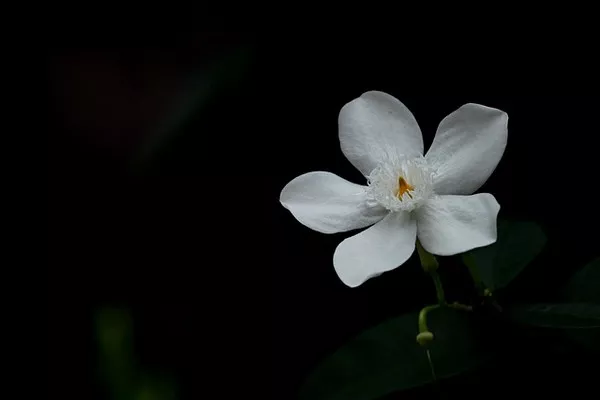Flowers are nature’s exquisite masterpieces, capturing moments of ephemeral beauty that can be preserved for a lifetime with the right techniques. Whether it’s a cherished bouquet from a special occasion, a sentimental gift, or simply a way to hold onto a piece of nature’s artistry, preserving flowers forever allows us to relive their splendor indefinitely. In this article, we will explore various methods and tips on how to save flowers permanently, turning them into cherished keepsakes.
Pressing Flowers
Pressing flowers is one of the oldest and simplest methods of preserving their beauty. This technique is ideal for delicate flowers like violets, pansies, or daisies, which may lose their shape and color when dried in other ways.
Materials needed:
Fresh flowers
Heavy books or flower press
Parchment or blotting paper
A dry, dark place
Steps:
Select flowers that are fresh and in full bloom.
Lay the flowers flat between sheets of parchment or blotting paper.
Place the paper with the flowers inside a heavy book or a flower press.
Stack additional books or add weight to the press.
Leave the press in a dry, dark place for several weeks, regularly checking the flowers’ progress.
Once fully dried, carefully remove the preserved flowers.
Air Drying Flowers
Air drying is a straightforward method to save flowers, ideal for blooms such as roses, lavender, and sunflowers.
Materials needed:
Fresh flowers
String or twine
A dry, dark place with good airflow
Steps:
Gather fresh flowers in small bunches (3-5 stems) and tie them together with string or twine.
Hang the flower bunches upside down in a dry, dark place with good ventilation. Avoid direct sunlight, as it can fade the colors.
Leave the flowers to air dry for several weeks until they are fully dried and crisp.
Once dried, remove the flowers from their hanging position.
Silica Gel Drying
Silica gel is a desiccant that effectively removes moisture from flowers, preserving their shape and color. This method is suitable for flowers with intricate shapes and vibrant colors.
Materials needed:
Fresh flowers
Silica gel
Airtight container
Steps:
Fill the bottom of an airtight container with a layer of silica gel.
Trim the flower stems and place the flowers face up in the container.
Carefully pour more silica gel over the flowers, ensuring they are completely covered.
Seal the container and leave it undisturbed for about a week, or until the flowers are fully dried.
Gently remove the dried flowers from the silica gel, using a soft brush to clean off any remaining particles.
Freeze Drying
Freeze drying is a more advanced technique that preserves the flowers’ shape and color exceptionally well. It requires specialized equipment and may not be accessible to everyone.
Materials needed:
Fresh flowers
Freeze dryer
Steps:
Trim the flower stems to the desired length.
Arrange the flowers on a tray or rack inside the freeze dryer.
Follow the manufacturer’s instructions for freeze drying, as the process may vary depending on the equipment.
Once the flowers are completely dry, carefully remove them from the freeze dryer.
Wax Dipping
Wax dipping is a unique method that encases the flowers in a protective wax coating, preserving their appearance for an extended period.
Materials needed:
Fresh flowers
Paraffin wax or beeswax
Double boiler or microwave-safe container
Wooden skewers or wire
Paper towels
Steps:
Melt the wax in a double boiler or microwave-safe container.
While the wax is melting, secure the flowers to wooden skewers or wire, leaving enough space between each bloom.
Dip the flowers into the melted wax, ensuring they are fully coated.
Immediately remove the flowers from the wax and let excess wax drip off.
Place the waxed flowers on paper towels to cool and harden.
Trim any excess wax from the stems and arrange the preserved flowers as desired.
Resin Encapsulation
Resin encapsulation is a modern and artistic way to preserve flowers while creating decorative pieces like jewelry or paperweights.
Materials needed:
Fresh flowers
Clear casting resin
Silicone mold
Mixing cups and sticks
Resin dye (optional)
Steps:
Arrange the flowers in a silicone mold in the desired pattern.
Mix the clear casting resin according to the manufacturer’s instructions. Add resin dye if you want to tint the resin.
Carefully pour the mixed resin over the flowers in the mold.
Use a toothpick or skewer to remove any air bubbles.
Allow the resin to cure for the recommended time, typically 24-48 hours.
Once fully cured, remove the preserved flowers from the mold, trim any excess resin, and polish if necessary.
Conclusion
Preserving flowers forever allows us to hold onto fleeting moments of natural beauty, transforming them into cherished keepsakes that can be displayed and admired for years to come. Whether you choose traditional methods like pressing or air drying, or opt for more advance d techniques like freeze drying, wax dipping, or resin encapsulation, the key to success lies in patience and attention to detail. Each method has its unique advantages, so consider the specific flowers you wish to preserve and the desired outcome when selecting your preservation method. By following these techniques and tips, you can ensure that the beauty of your favorite flowers remains eternal.


